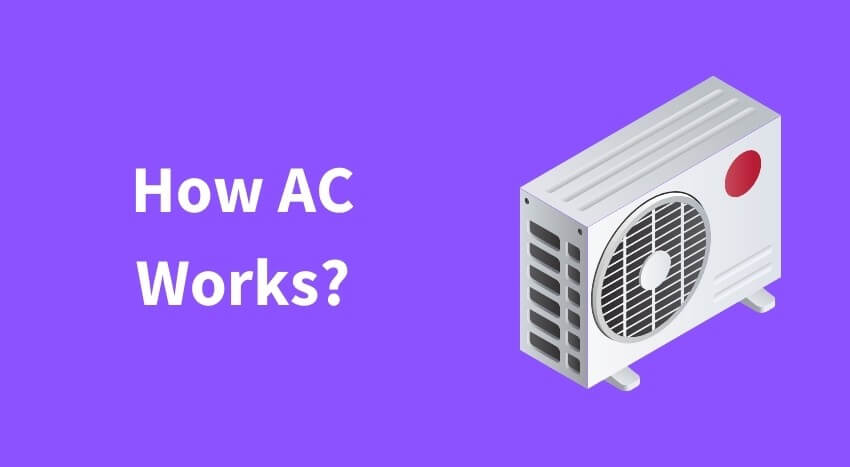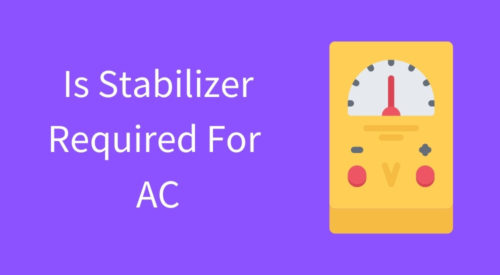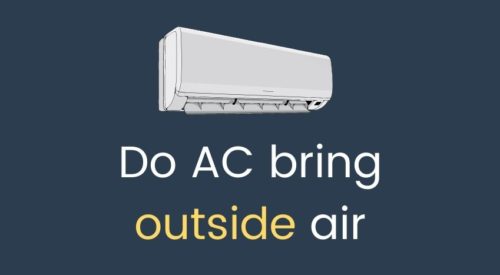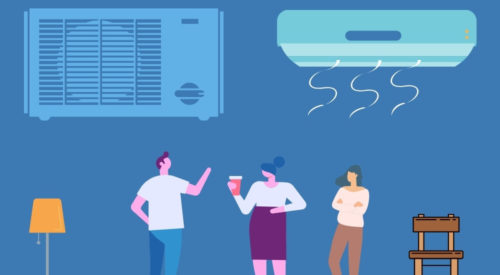Turn on the AC and it chills the room and creates soothing conditions inside.
But have you wondered how your AC works and how it cools the room?
Most people think that an AC produces cool air by itself but in reality, it removes the room heat to the outdoor environment.
This post answers
- How Split AC Works
- Working Principle behind an AC
- Refrigeration mechanism
Basic Work of AC (in short)
An air conditioner system works on the mechanism of refrigeration.
There are two units in a split AC – indoor and outdoor.
Both units contain a coil.

The indoor unit contains the evaporator coil and the outdoor unit contains the condenser coil. These coils connect with each other.
For an AC to work properly
The evaporator coil must be always cooler than the room temp and the condenser coil must be always hotter than the outdoor temperature.
Energy can neither be created nor be destroyed so for AC to cool the room inside it must heat the outdoor world.
Imagine: Hundred and thousands of AC run on a daily basis in the world. These cool the room inside but are increasing the global temperature outside 🙁
Working: Step By Step

Main Components in the refrigeration cycle
- Compressor
- Evaporator Coil
- Expansion Valve
- Condenser Coil
There is a pressurized refrigerant inside the coil which facilitates heat transfer.
Step 1: Compressor Starts and compresses the refrigerant
By creating high pressure the compressor heats up the refrigerant which further flows into the condenser coil.
With the help of a blower or fan, outdoor air circulates with the coil and heat gets removed from the refrigerant.
The refrigerant looses heat and converts into liquid.
Step 2: Expansion Valve cools the liquid refrigerant
This device creates a low-pressure situation which makes a portion of liquid turn into gas, also making the liquid to cool down.
Step 3: Cold refrigerant reaches the evaporator coil
Evaporator coil also has a blower that circulates room air with the coil.
By doing so the refrigerant absorbs heat from the room air making the room cooler and converts majorly in the gaseous state.
The refrigerant goes back into the compressor.
Extra: There is an accumulator attached to the compressor which makes sure that only gas is passed to the compressor otherwise liquid can damage it.
Cooling Cycle
Starting from the compressor and going further to the condenser coil, expansion valve, and evaporator coil, the refrigerant gets back to the compressor.
This completes one cycle and the flow of refrigerant continues in the next cycle.
This cycle repeats again and again till the room gets cool or to say the desired set temperature is achieved.
After that, the compressor switches OFF and so the flow of gas.
Next
As the room temp rises the cooling cycle restarts and so the compressor.
But this differs in inverter ACs
After attaining the thermostat temperature the compressor in inverter AC runs on lower power to produce lower cooling.
Removing Humidity: The room air is humid and so contains water droplets. This air when gets in touch with the cold evaporator coil, due to condensation the water from the air in gas state converts into the liquid state. This water gets removed from the drain pipe.
Work of Thermostat: Thermostat is like a temperature sensor that senses the room temperature. It is attached near the evaporator coil. The blower sucks the room air inside where the thermostat takes the temperature reading. It controls the cooling cycles and shuts the compressor when the set temperature is achieved.
Cooling Capacity
For an air conditioner, the more it can remove heat from the room, the higher will be its cooling capacity.
This depends on many factors but majorly depends on the power of the compressor.
This cooling capacity is measured in “Ton”.
It’s crucial that one chooses the right tonnage AC according to the room size.
Choosing an oversized or undersized AC will lead to higher power consumption or room never getting cooled enough respectively.
Further Reading




